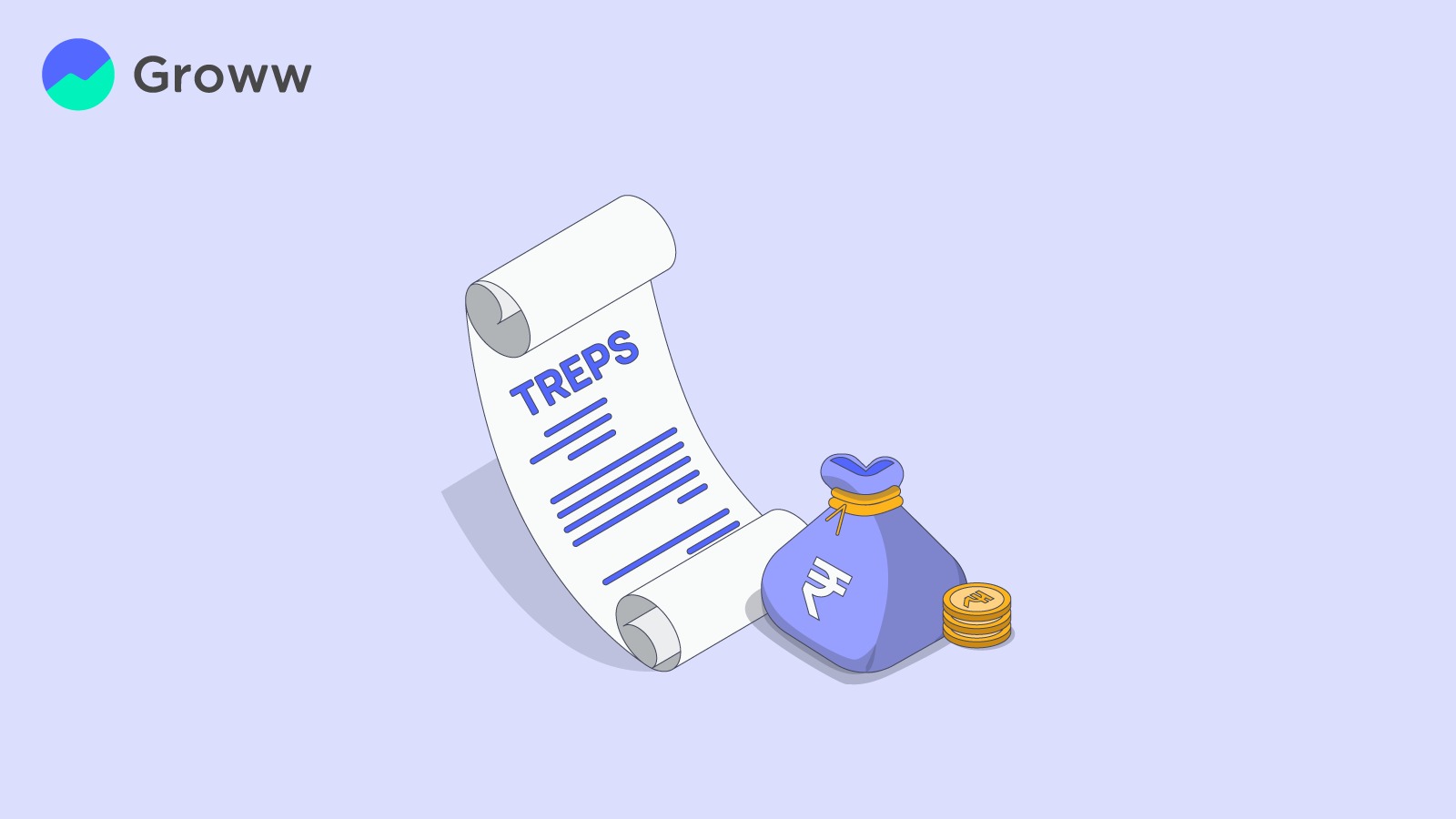What is TREPS in Mutual Funds?

Boosting returns and managing risk – for mutual fund houses, these are two important elements of their daily activity. Mutual fund houses employ many tools to achieve the best results on both fronts. One such tool employed to attain optimum portfolio performance is TREPS. This blog will explain TREPS, how it works, its benefits, and other crucial details.
Meaning of TREPS
The full form of TREPS is Treasury Bills Repurchase. It is a short-term money market tool that allows investors to earn returns on their idle cash. These short-term financial instruments are used by banks, financial institutions, and mutual funds for quick investments.
In a TREPS transaction, one party sells Treasury bills to another with an agreement to repurchase them at a predetermined price at a later date. Since TREPS are backed by government securities, they are considered safe investments.
TREPS provide quick liquidity and offer attractive returns, making them a popular choice for short-term investments. The Securities and Exchange Board of India (SEBI) requires mutual funds to allocate at least 5% of their liquid assets to TREPS.
Why do Mutual Funds Invest in TREPS?
After understanding what TREPS is, let us now understand why TREPS in mutual funds is advantageous:
- Enhancing Returns
To boost returns for their investors, mutual funds use TREPS. By investing in these instruments, mutual funds can earn extra income while maintaining the integrity of their overall investment portfolio.
- Liquidity Management
Mutual funds must keep enough cash to handle possible investor withdrawals. TREPS provide an efficient way to quickly access funds, facilitating the prompt processing of redemptions.
- Diversifying Funding Sources
Investing in TREPS allows mutual funds to diversify their investment portfolio and manage risks efficiently. This diversification helps reduce dependence on any single investment avenue, strengthening their financial strategies.
- Short-term Financial Needs
When mutual funds require immediate funding to seize investment opportunities or address short-term gaps, TREPS offers a practical solution to these urgent financial needs.
- Regulatory Compliance
Mutual funds must adhere to regulations set by the Securities and Exchange Board of India (SEBI). Investing in TREPS helps them adhere to this regulatory framework and remain compliant.
Benefits of Investing in TREPS
The following are the benefits of investing in TREPS:
-
Attractive Returns Based on Market Conditions
It offers returns that adjust with market conditions. They are particularly beneficial when interest rates are high, allowing investors to earn more on their idle cash.
-
Regulatory Compliance for Investor Confidence
SEBI has mandated that mutual funds include TREPS in their liquid assets. This compliance reassures investors that their investments meet regulatory standards.
-
Quick Liquidity for Short-Term Gains
TREPS offer fast liquidity, making it easy to access the money market. This feature is ideal for institutional investors wanting to park cash temporarily. It also facilitates easy buying and selling.
-
Sense of Safety Due to Government Backing of TREPS
The purchase of government-issued securities, which carry practically no fear of default, increases investors’ confidence in the safety of their assets.
-
Portfolio Diversification for Risk Management
Investing in TREPS helps diversify the fund’s portfolio, providing a stable and liquid option. This diversification reduces the overall risk and offers stability even during market fluctuations.
Does TREPS Affect the Stock Market?
When a mutual fund invests in TREPS, it can boost the fund’s net asset value (NAV), leading to higher unit prices. Investors often prefer funds with a higher NAV because it indicates better potential returns.
TREPS also provide stability, helping to cushion the mutual fund from risks associated with other investments. This stability can positively impact the fund’s unit prices, especially during market fluctuations.
However, if a mutual fund invests too much in TREPS for too long, it might limit potential earnings. If investors believe they could get better returns elsewhere, this could negatively affect the fund's performance. Mutual funds need to balance the amount and duration of their investment in TREPS to align with their goals and current market conditions.
The Bottomline
TREPS is favoured by mutual funds for their liquidity, safety, and solid returns. Regulators, too, require mutual funds to include TREPS in their portfolios. The returns from TREPS can enhance the mutual fund's net asset value and potentially boost the unit prices. Investors need to be aware of how TREPS affect mutual funds and understand the risks involved when making investment decisions.